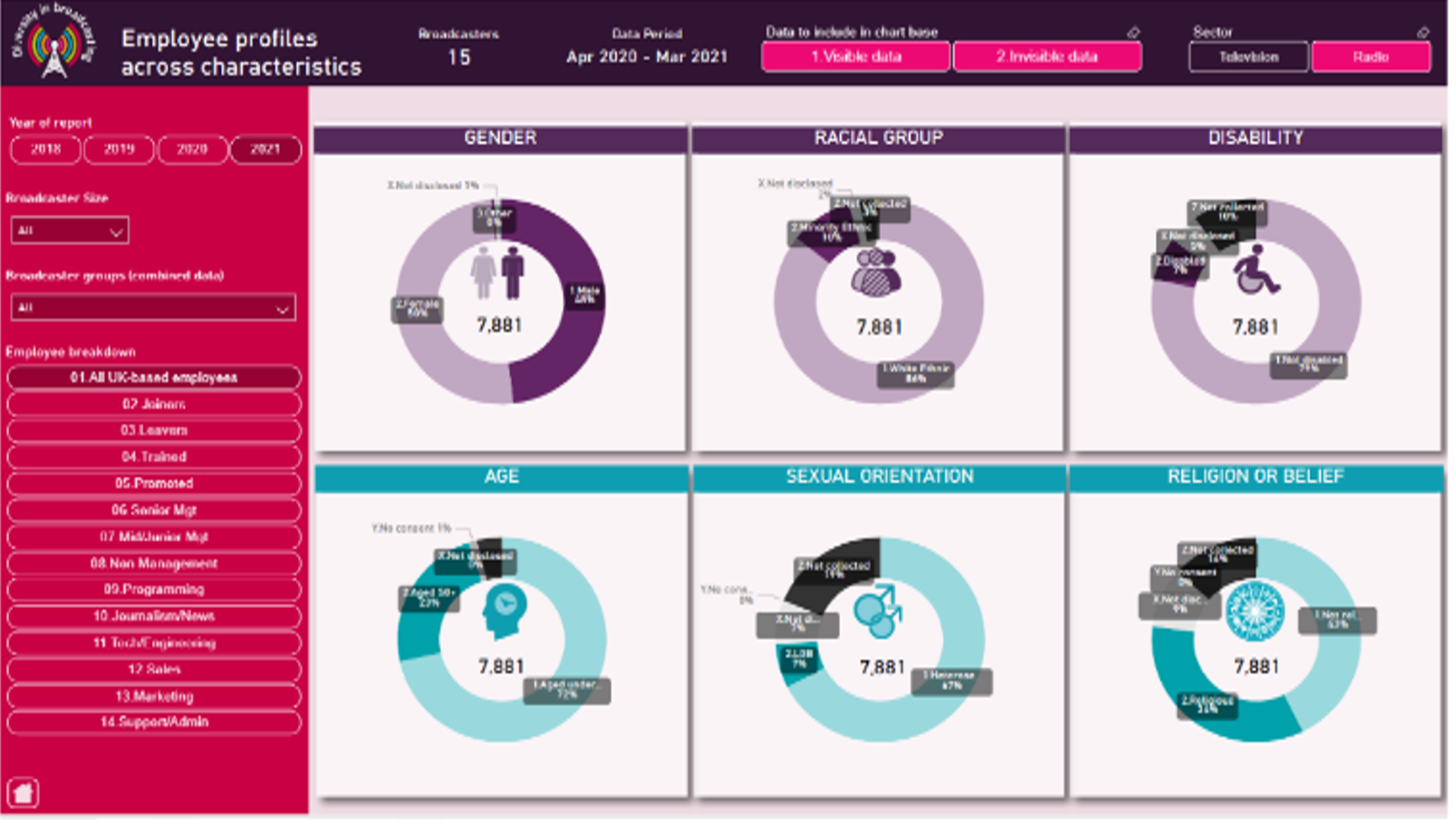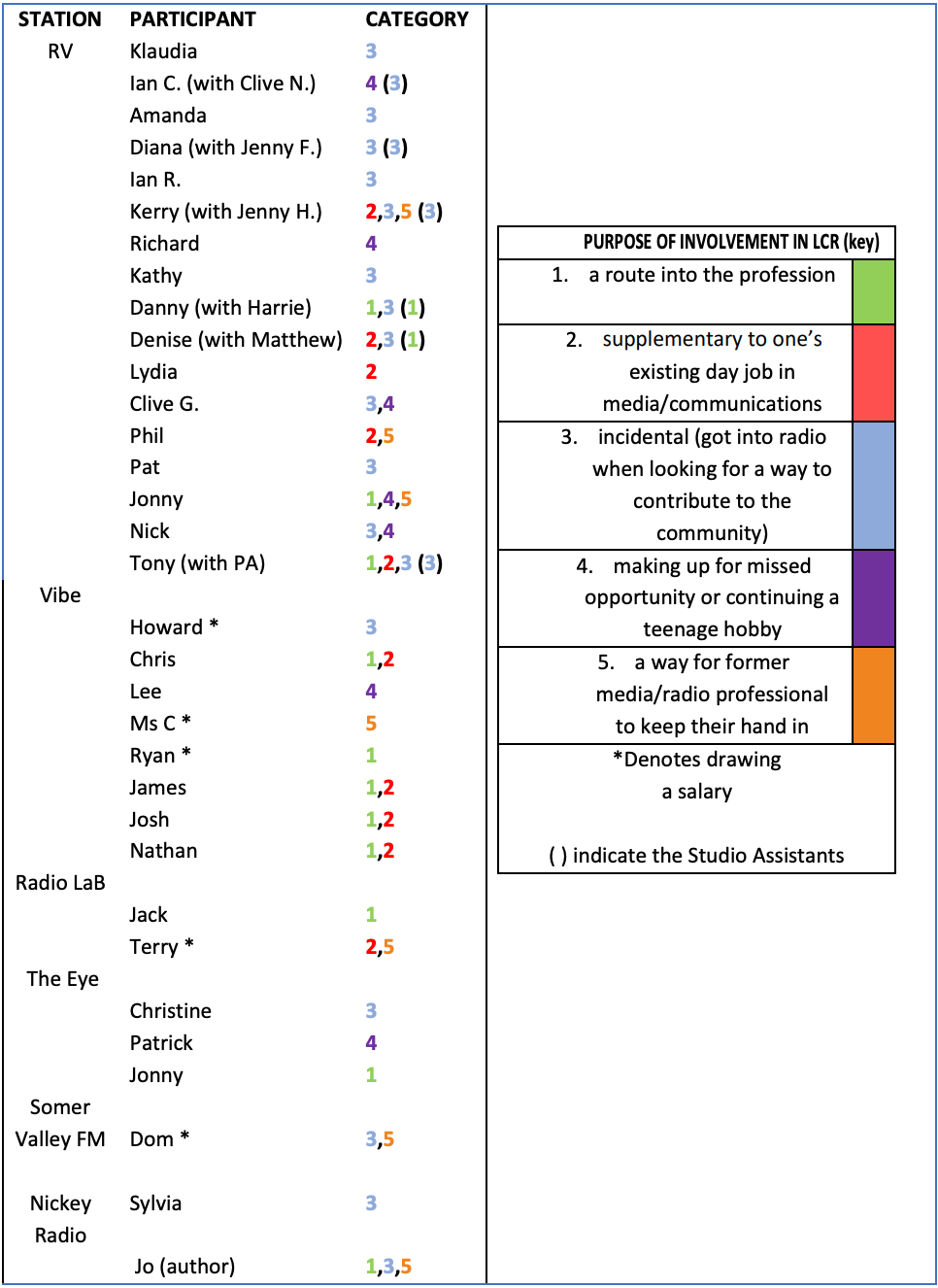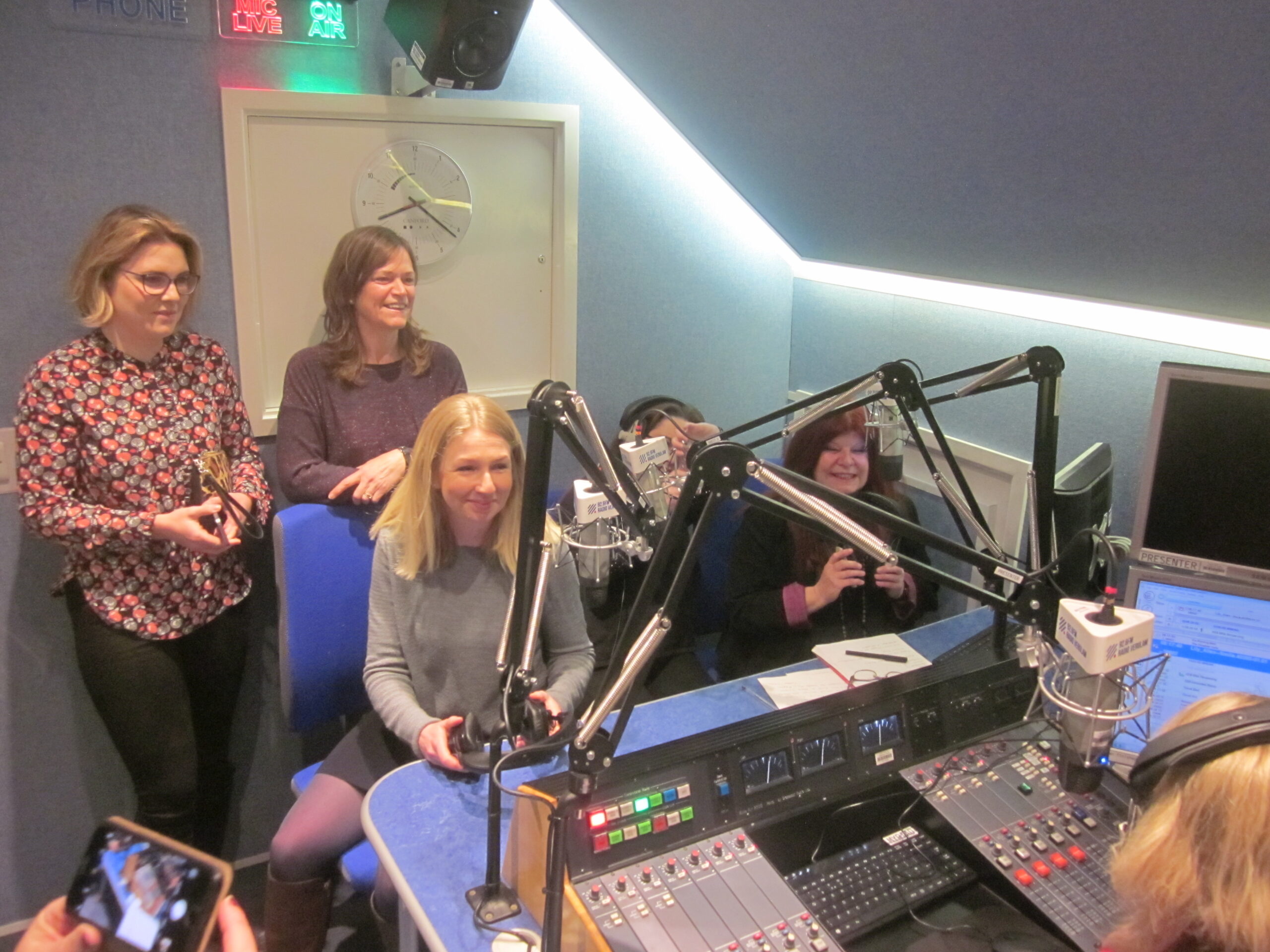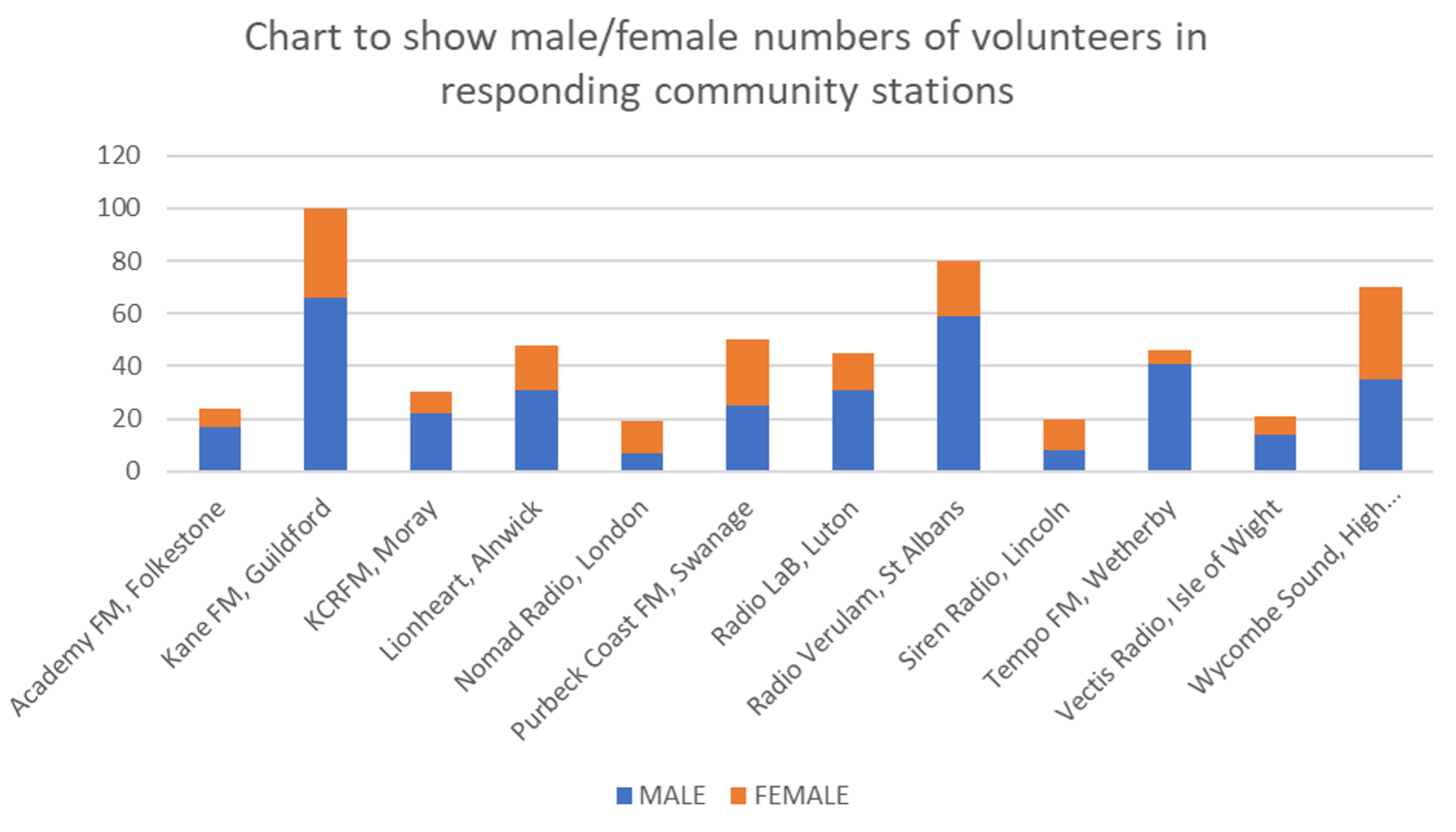Community Radio: Getting the Sonics Right
Josephine Coleman / Brunel University London

Equity, diversity, and inclusion (EDI) are core values in today’s society, yet there is also a lot of talk about ‘optics’. In politics and business, organisational adjustments and announcements are made so public-facing policies ‘look’ right. But where the media are concerned, particularly radio, the audible equivalent, ‘sonics’, need attention too. When we listen, whose voices are we hearing and whose life experiences are being represented? The big question for me is: does radio ‘sound’ right? We need to explore whether enough women are in the right roles.
With radio now in its second century, previously unacknowledged histories of women in the industry are coming to light. Men’s names no longer dominate the narrative and discoveries of the valuable contributions of women like Una Marson are making waves (Rowe and Frampton, 2022).
The latest official figures for UK mainstream radio show women account for 50% of the workforce (See Figure 1). However, if you dig deeper, you find that whilst 43% of senior managers are women, just 19% of technical and engineering roles are filled by women, whereas they perform over 60% of sales, marketing, and admin roles (Ofcom, 2023).
A recent study in Ireland suggests women are also under-valued in community radio, which is “unfortunate … because its entire reason to exist is founded on fostering greater social inclusion and ensuring a diversity of voices on air” (O’Brien, 2019, p. 788). O’Brien estimates a “40:60 ratio of women to men, with women dominating 2:1 in administrative roles and being under-represented in a 1:2 ratio in technical roles” (O’Brien, 2019, p. 796). She identifies isolated attempts to feature and include women in programme-making, creating ‘islands of women’s activity’.
Caroline Mitchell coined that term in 1998. She cited a “pan-European survey [which] found that men out-numbered women volunteers in all work areas apart from administration and finance. Where there were full-time paid staff, only 22% were women” (Lewis 1994 in Mitchell 1998, p. 78). Mitchell’s case study on Radio Venus, a project within Bradford Community Broadcasting (BCB), revealed how they aimed to:
… move women from secondary roles such as administration into primary roles of programme production and presentation. This means developing women’s confidence and assertiveness as well as production skills. It seems that women ‘taking up space’, being visible – or audible – on and off air is a key issue … women are often prepared to do ‘the jobs that need to be done’ off air.
Mitchell, 1998, p. 81
Researching the role of women in community radio
In the UK, most licensed community radio stations are duty bound to serve localities which may comprise mixed ethno-cultural populations and often wide age ranges. Everyday concerns are aired and shared, and everyone has a right for their voice to be heard. The sector should provide authentic content, articulated in each target audience’s language as ‘accented radio’ (Moylan, 2018). It should also be gender balanced.
My practice-based doctoral research involved an internship with a station in Hertfordshire: Nickey Radio (now defunct). I also conducted participant observation at a neighbouring station, Radio Verulam (RV) and four snapshot studies. I met 37 practitioners, observed over half of them in action and recorded 24 semi-structured interviews.
As you can see from Table 1, I found a good balance of participants at RV, however at the other stations, female research participants were harder to track down. Male voices were over-represented on all the schedules, therefore dominating the airwaves.

Despite the good show of women respondents at RV, the optics as far as the representation of women on the schedules were not as good. Figures soon improved, possibly influenced by my interrogation of their practices, but in 2019, only 13 women were presenting compared to 26 men, albeit one was the flagship breakfast show host. Special events provided great opportunities to bring more women into the station, such as the annual International Women’s Day breakfast show. Some of the guests pictured below, local business owners I encountered in March 2018, were recruited as volunteer presenters (see Figure 2).

There was another woman with considerable influence behind the scenes. Denise, who produced and presented local music show The Parsons Knows, was known as a ‘go-to person’ with a ‘finger in every pie’. As a director, she held several roles at the station including day-to-day operations management, selling sponsorship and general advertising, doing the social media, and looking after volunteers.
I observed generally that women receiving adequate training were no more intimidated than men by the studio technologies, the broadcast equipment and other hardware and software routinely used. However, they often had other responsibilities in their personal lives that were more difficult to juggle when additional demands were placed on their time by the station management (Coleman, 2020a, p. 197).
My subsequent research into community radio in June 2020, indicated that gendered hierarchies within the volunteer-led sector persist (Coleman, 2020b). My online questionnaire revealed that programme schedules and boardrooms are dominated by middle-aged, white men.[2] 79.5% of station leaders who responded were male; over half of them (52.3%) were aged between 51 and 70, and a further 34.1% were aged between 31 and 50.
I conducted 12 follow-up interviews with five female and seven male respondents and asked about their gender demographics. Two stations were reportedly two thirds’ women, two managers claimed an even 50:50, the others counted a third or less (See Figure 3).

As one of my respondents explained:
The gender split [here] actually is pretty even … I’m very proud of it. And I think it’s because we’re led by a woman, because you … often find it. BCB [Bradford Community Broadcasting] has a lot of great women broadcasters. That’s led by a woman. Swindon is led by a woman, I think. And another one, Ujima in Bristol, led by a woman. You know, I don’t want to get on a soapbox, but I think stations led by women actually do have a better gender split.
Pippa at Wycombe Sound, 2020
Good optics for better sonics
We can surmise reasons behind the poor gender balance, such as culturally embedded, preconceived ideas about who makes the best kind of radio presenter or practical considerations like how an individual’s availability may be limited by their domestic situation. The leading factors I found restricting access to the airwaves during the pandemic include the ability to use the appropriate software and access the internet, the possession of digital devices and mics for production purposes as well as the ability to find time and space to be left alone by co-habitees (Coleman, 2020b, p. 14).
Not all stations can be run by women but if the management teams have women on board, and those in charge empathise with their women volunteers and help address any insecurities regarding technology and complications relating to personal circumstances, better representation might be achieved and sustained. Concerted efforts should be made in recruitment to accommodate training programmes around their volunteers’ availability, even subsidizing women’s involvement by helping pay for equipment, transport, babysitting and other caring responsibilities.
If stations can pro-actively facilitate increased EDI, the result will not only be resoundingly better optics but more gender balanced sonics.
Image Credits:
- Figure 1: Screenshot from Ofcom’s Interactive Data. (Ofcom 2023)
- Table 1: List of research respondents at selected local community radio stations (LCRs) in Spring 2018 indicating their stated/apparent reasons for volunteering (Coleman, 2020a, p. 253).
- Figure 2: Guests on the special Radio Verulam Breakfast Show marking International Women’s Day 2018. (Photograph by Josephine Coleman.)
- Figure 3: Bar chart showing the proportion of men to women reported in the online survey 2020. (Author’s personal collection.)
Coleman, J.F. (2020a) Talk of the town. Exploring the social site of local content production for community radio. PhD Thesis. Birkbeck, University of London. Available at: https://eprints.bbk.ac.uk/id/eprint/45555/.
Coleman, J.F. (2020b) UK community radio production responses to COVID-19. London: Brunel University. Available at: http://bura.brunel.ac.uk/handle/2438/21156.
Mitchell, C. (1998) ‘Women’s (Community) Radio as a Feminist Public Sphere’, Javnost – The Public, 5(2), pp. 73–85. Available at: https://doi.org/10.1080/13183222.1998.11008676.
Moylan, K. (2018) ‘Accented radio: articulations of British Caribbean experience and identity in UK community radio’, Global Media and Communication, 14(3), pp. 283–299. Available at: https://doi.org/10.1177/1742766518780180.
O’Brien, A. (2019) ‘Women in community radio: a framework of gendered participation’, Feminist Media Studies, 19(6), pp. 787–802. Available at: https://doi.org/10.1080/14680777.2018.1508051.
Ofcom. (2023) Employee diversity profiles for the UK radio and TV industries, 2018-2021. Available at: https://www.ofcom.org.uk/tv-radio-and-on-demand/information-for-industry/guidance/diversity/diversity-equal-opportunities-tv-and-radio/2021/diversity-profiles-uk-radio-and-tv-industries accessed August 18th, 2023.
Rowe, Y. and Frampton, A. (2022) ‘Erased and Misremembered: Exhuming the Colonial Broadcasting of Una Marson’, Journal of Radio & Audio Media, 29(1), pp. 61–79. Available at: https://doi.org/10.1080/19376529.2021.1960351.
Notes:- I use first/fore names here as partial indicators of gender but acknowledge that cultural differences/name conventions amongst my readers may diminish clarity. [↩]
- Since my respondents were overwhelmingly White (86.4%), this suggests a need for further selective research in more diverse localities in the UK to properly assess what is happening in the stations that focus on ethnic communities. [↩]